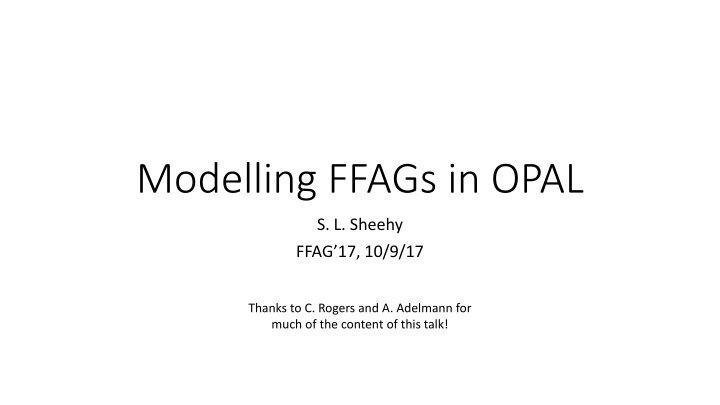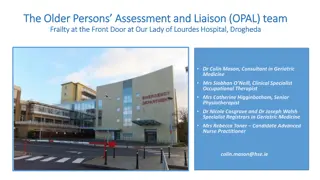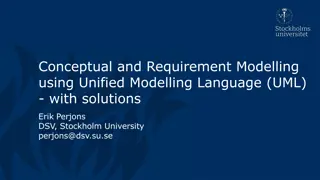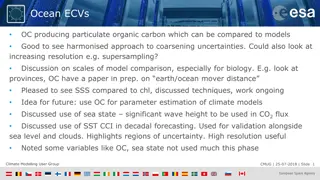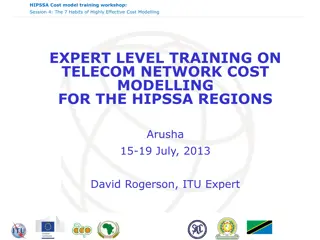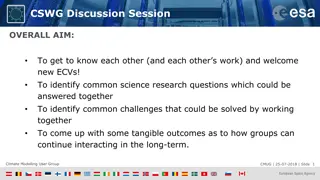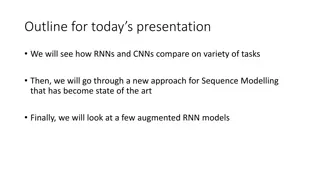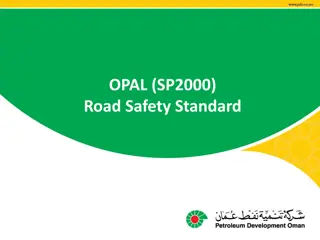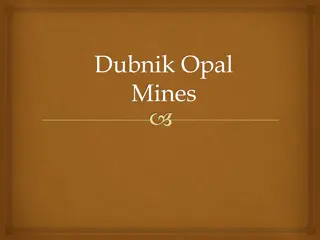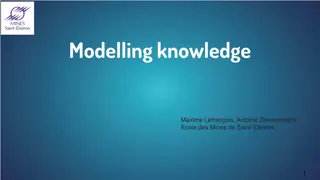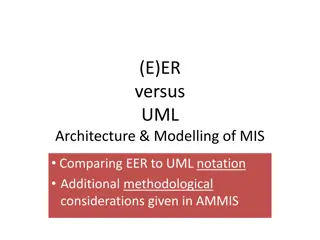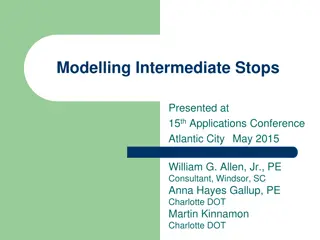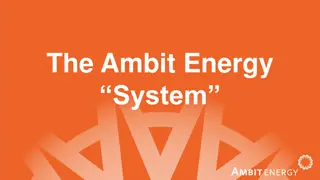Advances in Modelling FFAGs in OPAL: Insights and Future Prospects
Explore the advancements in modeling Fixed-Field Alternating Gradient (FFAG) accelerators in OPAL, including flexible geometry, variable frequency RF, and recent updates thanks to C. Rogers and A. Adelmann. Learn about the OPAL-CYCL flavors, benchmarking on the PSI ring, previous studies in ADS rings, and the utilization of variable RF and flexible geometry modules. Discover how the Ideal KURRI-FFAG model has contributed to studying dynamics and progress in the field of accelerator technology.
Download Presentation

Please find below an Image/Link to download the presentation.
The content on the website is provided AS IS for your information and personal use only. It may not be sold, licensed, or shared on other websites without obtaining consent from the author.If you encounter any issues during the download, it is possible that the publisher has removed the file from their server.
You are allowed to download the files provided on this website for personal or commercial use, subject to the condition that they are used lawfully. All files are the property of their respective owners.
The content on the website is provided AS IS for your information and personal use only. It may not be sold, licensed, or shared on other websites without obtaining consent from the author.
E N D
Presentation Transcript
Modelling FFAGs in OPAL S. L. Sheehy FFAG 17, 10/9/17 Thanks to C. Rogers and A. Adelmann for much of the content of this talk!
OVERVIEW Introduction to OPAL Previous FFAG studies Recent updates for FFAGs thanks to C. Rogers Flexible geometry Variable frequency RF Spiral FFAG magnet model Multipole model in OPAL Future prospects thanks to A. Adelmann
There are various flavours of OPAL we ve mostly worked with OPAL-CYCL
Previous Studies: 1 GeV ADS ring (Johnstone) 330 MeV 500 MeV 1000 MeV Avg. Radius [m] 5.498 6.087 7.086 x/ y (cell) 0.297/0.196 0.313/0.206 0.367/0.235 Field F/D [T] 1.7/-0.1 1.8/-1.9 1.9/-3.8 Magnet size F/D [m] 1.96/0.20 2.79/0.20 4.09/0.20
How to model? We used to use `CYCLOTRONS mode (same as PSI ring) This needed a 3D, 360 degree field map! Only allowed fixed frequency RF So only single energy studies . (or serpentine channel) X [m] Z [m]
Variable RF and flexible geometry modules RINGDEFINITION and SBEND3D http://amas.web.psi.ch/docs/opal/opal_user_guide.pdf
Dec 2016 Ideal KURRI-FFAG Previous benchmarking done using real KURRI- FFAG field maps. In this case, we wanted a simple model to study dynamics Generated 3D field maps using Francois new module in ZGOUBI Imported to OPAL, find closed orbits & check with single particle tracking Debugged some OPAL issues to allow progress
Matching with space charge In current OPAL, model to match coupled in x-z with space charge. We ran this on the FFAG (as a test) and it seemed to work Implementing synchrotron-like matching would be useful too!
KURRI-FFAG modelling Next step: update to SBEND3D model (using Chris modules) and incorporate variable frequency RF Continue tracking & understand matching/SC modelling in FFAG Then re-introduce real field maps of KURRI-FFAG
C. Rogers, STFC/ISIS/RAL What about SPIRAL FFAGs? New spiral sector magnet model in OPAL Fairly general fringe field model to arbitrary order Enable FFAG design/optimisation plus usual OPAL space charge model
Magnet model setup Derivation of eld expansion (2) Derivation of eld expansion (1) Assume there exists a solution as a power law expansion in vertical axis (z) Consider a midplane eld of the form Use Maxwell z direction gives With direction gives
Derivation of eld expansion (3) Use Maxwell Assume fn has a form like Then we get recursion relations like for odd and even n like
Implementation We have a set of recursion relations for o0-midplane elds that only depend on f0 and its derivatives Use any function for f0 that has continuous derivatives Use C+ + inheritance (function pointers) to determine at run time which fringe eld map to use End eld plug in Implemented Enge Good for tting an existing eld map Easy to do horrible things with poor choice of parameters Recursion relation for arbitrary derivative
Implementation Implemented Tanh Clear parameterisation with two parameters:- Centre length ( 0) Fringe eld length ( ) Recursion relation for arbitrary derivative Most functions can be implemented Need to have known derivatives
Test Field Map Bz [T]
FETS Ring 12 cells Concept to test Shinji's DF spiral using a small test ring Speci cation: Cell Tune H 0.21625; V 0.21833 Approx. 3 m radius Acceptance ~ 10 mm mrad Consider 12 cells
FETS Ring 12 cells Kinetic Energy Number of cells Radius Magnet Field Drift length Magnet Length K index End field length tan(delta) H cell tune V cell tune 3 30 MeV 12 2.8 3.5 m 1.2, 0.5 T 0.8 m 0.16, 0.08 m 4.3 Magnet length*0.1 1 0.21625 0.21833
Tune vs df ratio 12 cells Red circles horizontal Blue triangles - vertical
Tune vs end length 12 cells Red circles horizontal Blue triangles - vertical
Tune vs tan delta 12 cells Red circles horizontal Blue triangles - vertical
Tune vs eld index 12 cells Red circles horizontal Blue triangles - vertical
OPAL Multipoles (Titus Dascalu) Upgraded multipole model coming soon to OPAL Vary entrance and exit fringe elds/angles independently Superpose multipoles of di0erent order for combined function magnets E.g. modelling ISIS in storage ring mode Can enable modelling of e.g. mixed FFAG/multipole lattices
OPAL releases Previous work was done mostly in OPAL 1.3-1.4 1.6 is the current release This has variable RF, SBEND3D geometry, Does not yet have the SPIRAL FFAG magnet model or MULTIPOLE as they are currently still in testing (C. Rogers)
OPAL V. 2.0 (first release 1Q 2018) Full 3D placement of Elements motivated by BerlinPro (ERL) requirements overlapping fringe fields Multiobjective Optimizer integrated in OPAL Adaptive Mesh Refinement (PhD. project) neighboring bunches more resolution in space charge calc. Multipoles in curved coordinate system incl. fringe fields All Information: https://gitlab.psi.ch/OPAL/src/wikis/home all information Wiki based (incl. Manual) A. Adelmann
Summary FFAGs are very demanding for simulation with full 3D space charge However, in OPAL many of the tools are now in place Mainly thanks to Chris Rogers & Andreas Adelmann since 2012 OPAL is a free, collaborative and powerful simulation toolkit. Let s get to work and use it further!
Thanks suzie.sheehy@physics.ox.ac.uk
Serpentine channel acceleration (Has now been demonstrated in EMMA, an electron model ns-FFAG) High E Parabolic time of flight with energy is the trick here! Low E h=1 ~ 7.5 MHz Phase Max. phase acceptance (degrees) With parabolic TOF & sufficient voltage per turn we can use the serpentine acceleration channel This may limit how high the harmonic number can be for reasonable acceptance. MV/turn With large voltage per turn, the serpentine channel acceptance is very large.
High intensity effects Transverse & Longitudinal Vertical (axial) Should be relatively unimportant. Vertical current limit Very simple estimate as for a cyclotron: These are intrinsically coupled Will be very important! E.g. in cyclotrons: Want high accelerating voltage and a strong vertical tune For FFAG with B=2T, V=1, 2, 4 MV/turn, f=36 MHz 1400" 1200" 4 MV/turn 1000" 800" Ilim (mA) 600" 2 MV/turn 400" Intrinsic coupling between x-z plane cannot be avoided and must be studied in detail! 1 MV/turn 200" 0" 0" 0.05" 0.1" 0.15" 0.2" 0.25" 0.3" 0.35" z
